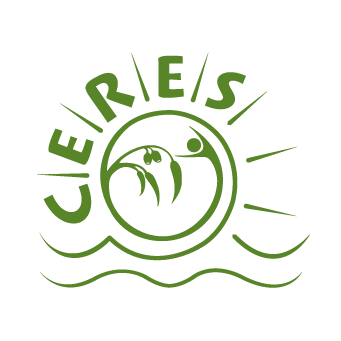By Luke Wakeling
CERES Science Communications Intern
Tom Lang loves science. He’s the leader of the CERES energy education program and is tasked with educating the hordes of inquisitive children which flock to the East Brunswick sustainability park. Tom’s passion is infectious and knowledge is deep. He holds a Masters in Science Communication and previously ran lightning shows and planetarium experiences at the iconic, Scienceworks. I had the pleasure of joining him for a guided tour of the CERES energy facilities.
For many children the light switch is a magic box. The concept of electricity is abstract and even many parents would struggle to explain by what miracle modern humans illuminate their surrounds. Tom’s goal is to change that.
The energy program at CERES is pretty damn cool. Sure, I’d seen a hand turned drive shaft power a light bulb, but does Australia’s electricity system ran on hand turned drive shafts? No, our energy is (mostly) fossil. To demonstrate how this works Tom has fires up a mini fossil fuel generator and produces electricity with relative ease compared to his bicycle powered hair dryer.

The children soon join the dots. Energy rich resources like coal, oil and gas, have made life easy and abundant. When we burn them, they produce heat, creating the steam which drives turbines. These turbines generate a flow of electrons, or electricity. We owe much of our technological progress to this process, but unfortunately, as we have so dramatically found out (see rising temperatures, sea levels and the increased prevalence of natural disasters), this behaviour is not without consequence.
Climate change, not exclusively for school kids, is a big scary issue that is often conflated with every other environmental challenge: plastic pollution, holes in the ozone, the extinction of the bees (yes, you are right it does have some links to all three). Tom breaks it down to his pupils in basic terms, “really what is happening is increased levels of CO2, produced by the mass burning fossil fuels, is causing the earth to get hotter. It’s a relatively simple process, however the outcomes are highly complex.”
So, what can we do? We want to use our televisions, phones, computers and kettles, but if the temperature doesn’t stop rising we are going to have some big problems! The solution, thankfully, has already been discovered. There is energy all around us, from the sun, wind, and waves to name a few. The best news it that we have already discovered methods of harnessing this energy without producing anywhere near the amount of Co2 as through the burning of fossil fuels.


Tom isn’t focussed on behaviour change, rather, he wishes to impart an understanding of how technologies like solar energy work. He has the kids testing the output of panels with wires and meters, what happens if we point it this way, what happens if I stand in front of it? Better yet, lets hook it up to this fan and see it in action!
Outside we see large ground and roof mounted solar setups, and a windmill or two. There is even a solar thermal dish (a.k.a solar deathray) which allows Tom to demonstrate the awesome power of the sun by occasionally setting things on fire. These renewable energy generators serve not only as an educational tool but provide some emissions-free power to CERES’ social enterprises like the Merri Table.


The energy program goes to the heart of why CERES exists. It’s an educational resource for developing knowledge within the community. In the hands of our bright young minds this deeper understanding of how we produce electricity will go towards solving the biggest challenges our society faces.
And what’s next for Tom? There are plans for a bicycle powered classroom and an upgrade to the signage and exercise sheets that accompany his program. Given an annual attendance of 60,000 students a year, I think he will have his hands full for some time to come.









Leave A Comment